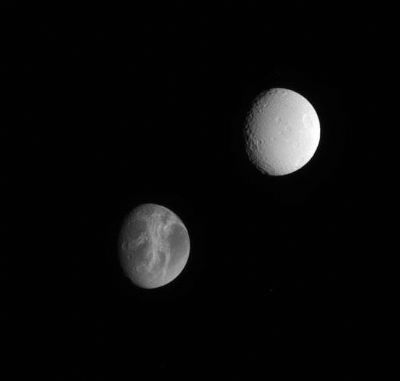美國康奈爾大學的研究人員稱,月亮不是唯一圍繞地球軌道運行的天體。其它更小一些的物體也一直有規律的運行在地球軌道上,有時它們會離開幾個月,但仍然會回來繼續繞地運行。在這個科學家都忙著研究地外星球的時代,這項研究被認為具有重大的意義。不過由于這些臨時月亮太小,以至于太空飛船也不能在其上著陸,因此,科學家只能等它們距離地球較近時通過天文望遠鏡進行研究。
其實,早在2006年,美國卡特里娜巡天系統已經發現有一顆這樣的臨時月亮繞地運行一年。但,康奈爾大學的科學家認為,還有更多的“秘密月球”沒有受到應有的關注。科學家認為,除了月亮外,在任何時候,地球都會有至少一顆直徑超過1米的非人造衛星環繞左右。

|
 |
|
There are at least two moons orbiting Earth at any given time. |
Researchers at Cornell University say that what we know as the Moon is in fact not the only one orbiting our planet at any given time. Smaller objects regularly inhabit the Earth's orbit, usually leaving after a few months to continue on their celestial journeys.
The discovery is considered a major breakthrough for space research because scientists had been working toward visiting asteroids outside of Earth's orbit for research. While these temporary moons are too small for a shuttle landing, they are prime for research from a relatively close distance.
However, it's still to be determined whether the announcement will capture the public's attention like previously revealed New Moons. Either way, it should be a decidedly more pleasant experience for all involved.
The new paper titled "The population of natural Earth satellites," from Cornell University's Mikael Granvik, Jeremie Vaubaillon and Robert Jedicke states that these "secret moons" enter and exit the Earth's orbit without notice.
"At any given time, there should be at least one natural Earth satellite of 1-meter diameter orbiting the Earth," Granvik writes.
Scientists have confirmed at least one such temporary moon, discovered by the Catalina Sky Survey in Arizona in 2006.
"Our results are consistent with the single known natural [temporarily-captured orbiter] 2006 RH120, a few-meter diameter object that was captured for about a year starting in June 2006," the report says.
相關閱讀
(Agencies)

(英語點津?Rosy 編輯)